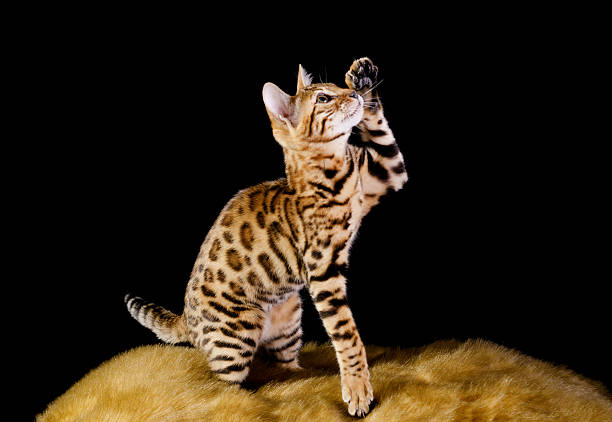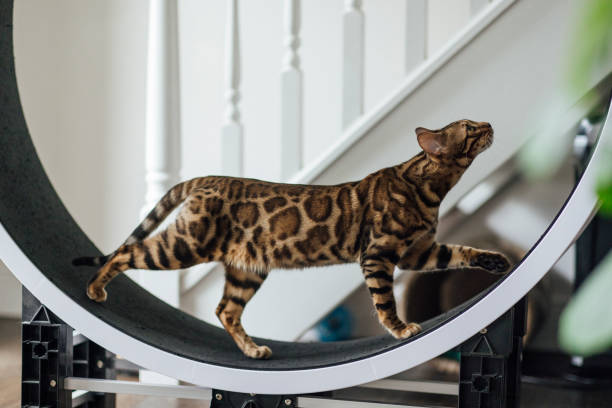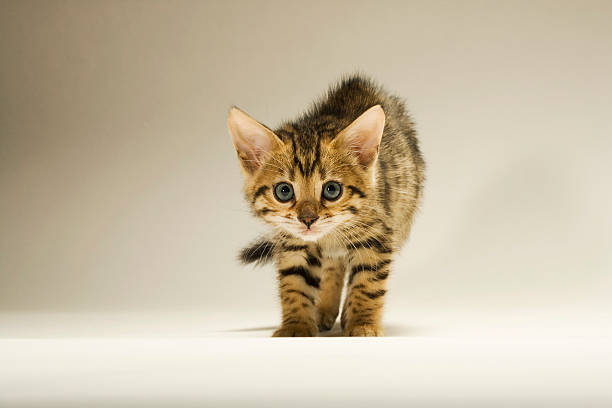Bengal: The Exotic and Energetic Feline

History of the Bengal
The Bengal cat is a modern breed that originated in the United States in the 1970s. It was created by mixing the Asian leopard cat (Prionailurus bengalensis) with a domestic cat to look wild but stay friendly and loving.
Bengals have a fascinating lineage, tracing back thousands of years to their common ancestor with wild animals. Their genetics connect them to human settlements where early cats adapted to domestic life. The breed was refined over generations, focusing on muscular build, agility, and intelligence. Today, the Bengal cat is recognized by The International Cat Association (TICA) and other major cat breeds organizations worldwide. It is admired for its coat colors, striking patterns, and lively temperament.
Popularity of the Bengal
The Bengal cat is a highly sought-after exotic breed, loved in the United States, Europe, and Southeast Asia for its striking appearance and playful nature.
The Bengal cat, recognized by The International Cat Association (TICA), frequently appears in cat shows and is admired for its wild ancestry. Enthusiasts appreciate its muscular build, intelligence, and ability to problem solve. Many cat lovers search for Bengals due to their unique lineage linked to the Asian leopard cat Prionailurus.
Physical Traits of the Bengal
The Bengal cat is a medium to large-sized cat with a sleek, athletic body that showcases its wild ancestry.
Key Features:
• Coat Colors and Patterns: Bengals have a short, dense coat that feels like silk. Patterns include leopard-like spots, rosettes, and marbling in shades of brown, snow, silver, and charcoal.
• Size and Body Weight: Bengals weigh 8 to 15 pounds, with males being larger. Their muscular build helps them jump high and run fast.
• Head and Expression: Bengals have a wedge-shaped head, rounded ears, and large, almond-shaped eyes in shades of green, gold, or blue (for snow Bengals).
• Agility and Strength: Their sleek and muscular frame makes them one of the most active and athletic cat breeds.

Behavioral Traits of the Bengal
The Bengal cat is known for its intelligence, energy, and social nature. It enjoys interactive play and loves to engage in mentally stimulating activities.
Key Behavioral Traits:
• Energetic and Active: Bengals need plenty of exercise. They love climbing, running, and jumping.
• Highly Intelligent: They are quick learners, able to problem solve, and even learn tricks and commands.
• Affectionate and Social: Bengals bond closely with their families and love to be involved in household activities.
• Loves Interactive Play: Bengals enjoy interactive toys, puzzle feeders, and even playing in water.
• Vocal and Communicative: Known for their chirps and trills, they are expressive and interactive with humans.
Why Choose a Bengal?
The Bengal cat is ideal for families and individuals seeking an active, smart, and uniquely beautiful pet.
Reasons to Choose a Bengal:
1. Exotic Wild Look: Its leopard-like coat and sleek build make it unique among domestic cat breeds.
2. High Energy and Playfulness: Bengals require interactive play and are always on the move.
3. Affectionate and Loyal: They love spending time with their owners and enjoy cuddles after playtime.
4. Low Grooming Needs: Their short coat is easy to maintain with minimal shedding.
5. Smart and Trainable: They respond well to positive reinforcement and can be taught tricks.

Caring for Your Bengal
Bengals require an active lifestyle, mental stimulation, and a well-balanced diet to thrive.
Care Tips:
1. Exercise and Play: Provide climbing trees, scratching posts, and interactive toys to keep them engaged.
2. Grooming Needs: Their short coat requires only weekly brushing to stay healthy.
3. Nutrition and Muscle Building: A high-protein diet supports their muscular build and energy levels.
4. Social Interaction: Bengals need human companionship and daily play sessions.
5. Health Monitoring: Regular vet visits help detect conditions such as progressive retinal atrophy (PRA) or heart disease.
6. Safe Environment: Bengals are curious and adventurous. Providing a secure space ensures their safety.
Conservation and Heritage
The Bengal cat descends from the Asian leopard cat (Prionailurus bengalensis), which is native to Southeast Asia. While domestic Bengals are not wild cats, their ancestors are listed on the IUCN Red List due to habitat loss. Ethical breeding programs help preserve both the breed and its heritage. Over millions of years, these cats evolved to thrive in different environments, adjusting to body weight, muscle building, and hunting skills to survive.
Ready to Welcome a Bengal Into Your Home?
United Pet Club is here to help you find the perfect Bengal companion. Whether you’re looking to adopt or connect with trusted breeders, we provide resources to guide you every step of the way.
Our Services Include:
• Connecting you with reputable breeders and adoption centers.
• Providing expert advice on training, nutrition, and grooming.
• Offering information on Bengal care, including exercise, diet, and social needs.
Find Your Perfect Companion Today!
Explore our platform to find Bengal cats available for adoption and learn more about their history, training, and care. Contact United Pet Club today to start your journey with this exotic and energetic breed!
